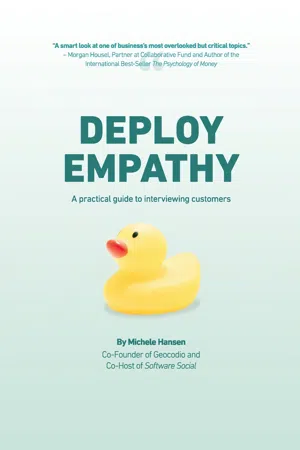Knowing which questions to ask is the hardest part of an interview.
You probably know you shouldn’t ask, “Would you buy this?” or, “What are your pain points?,” yet going from what you shouldn’t do to what you should do is a big leap.
This part is your springboard to asking useful and impactful questions in common situations:
- Discovery interviews, when you’re exploring a new idea and are trying to understand a problem better
- Switch interviews, to figure out why someone switched to your product and how you can market it better to get more customers
- Long-time customer interviews, to figure out what makes people keep paying you
- Cancellation interviews, to figure out why someone canceled
- Interactive interviews, to test a prototype, wireframe, or live product with someone
- Card sorting interviews, to help you understand which problems are high-pain and underserved
These scripts have been refined over thousands of interviews. I have used them with everyone from eighteen-year-old college students creating a map for a semester project, to executives entering a new market, to ninety-year-old men who consult actuarial tables to see if they will leave enough money for their spouse if they die first.
The suggested phrasing has been used and tested in the thousands of interviews I’ve conducted, yet there are many ways to ask a question. So feel free to make them your own as long as you’re keeping the original meaning.
If you have a phrasing that you think is more effective, please email me! The more we can be a community of continual learners who share techniques, the better.
I encourage you to adapt the scripts to your purpose. Feel free to delete questions, add questions, translate them, or phrase things in a way that fits with local or industry social norms. The scripts are just a starting point, so make them work for you.
To make it easy for you to use and adapt the scripts, you can find the templates at deployempathy.com/scripts.
You will likely encounter other situations where you want to interview people. To that end, remember the overall framework for interviews:
- What they’re trying to do overall
- The steps they take to do that
- What they’ve already tried
- Where they spend time and money throughout the entire process
- How often they experience the problem
- How long it takes them
